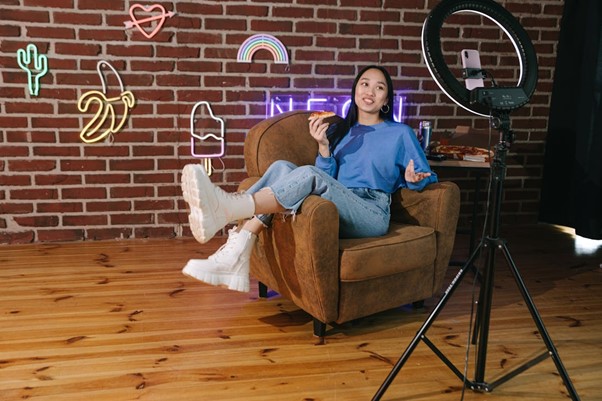
Beauty blogging has transformed into an essential part of the beauty industry, with blogs providing everything from product reviews to the best skincare advice. As we look toward 2025, beauty bloggers must stay on top of new trends to keep their readers engaged. This article will cover the most important developments in the beauty blog world that will shape the industry’s future. From video content to sustainability, beauty bloggers must evolve to remain relevant.
Video is the go-to format for beauty bloggers. Platforms like TikTok, Instagram Reels, and YouTube Shorts are perfect for sharing quick makeup tutorials or product demonstrations. In 2025, beauty blogs that don’t integrate video content risk losing engagement. Short-form videos are particularly effective for beauty bloggers looking to showcase transformations and tips. To stay competitive, beauty bloggers should focus on creating high-quality videos that captivate their audience while showcasing their personality and style.
Sustainability is a growing concern, and readers increasingly seek eco-friendly beauty products. Beauty blogs focused on sustainable and cruelty-free products will gain more loyal followers in 2025. Highlighting brands that prioritise ethical sourcing and eco-friendly packaging will be key for bloggers. Also, many beauty blogs will start educating readers about sustainable beauty practices, such as reducing waste and supporting companies with green initiatives. Bloggers who make sustainability a core part of their content will stay ahead of the trend.
Artificial intelligence is changing how we shop for beauty products, and this trend will continue in 2025. AI-powered tools, like virtual makeup try-ons and personalised skincare analysis, are making beauty more personalised than ever. Beauty blogs can use these tools to provide tailored recommendations to their readers, making content more engaging. By integrating AI into their platforms, beauty bloggers can help readers find products that meet their unique needs, enhancing their blog's value and relevance.
Inclusivity is no longer a trend—it’s a standard. Beauty blogs that celebrate diversity, representing different skin tones, hair textures, and cultural beauty practices, will resonate deeply with audiences in 2025. It’s crucial for beauty bloggers to review products that cater to a wide range of people, from gender-neutral skincare to products designed for specific skin types. In the future, beauty blogs that focus on inclusivity will not only grow their audience but also push the industry forward toward more representative beauty standards.
Augmented reality is revolutionising the beauty industry, offering consumers virtual try-ons for makeup and skincare. Beauty blogs that incorporate AR tools will create more interactive and engaging content for their audience. In 2025, expect beauty bloggers to use AR to enable readers to see how products will look on their own skin before purchasing. Partnering with brands that offer AR try-ons will help beauty blogs stand out, providing their readers with a futuristic and immersive beauty experience.
Affiliate marketing will remain one of beauty bloggers' top revenue streams in 2025. Beauty blogs that include affiliate links can easily monetize their content by recommending products their readers love. New affiliate platforms are offering better commission rates, making this strategy even more lucrative. Beauty bloggers can maximise their earnings by incorporating affiliate links into reviews, tutorials, and “shop the look” features. As e-commerce grows, beauty blogs that capitalise on affiliate marketing will thrive financially.
Artificial intelligence is becoming a valuable tool for beauty bloggers, helping them optimise content and streamline the writing process. AI can assist in creating SEO-friendly content, identifying trends, and even editing videos. In 2025, AI will allow beauty bloggers to produce more content with less effort. However, maintaining authenticity is key—while AI tools can help, bloggers need to ensure their unique voice and style remain intact. AI will assist, but it shouldn’t replace the personal touch of a beauty blog.
Building a tight-knit community is essential for beauty bloggers, especially micro-influencers with smaller but highly engaged followings. In 2025, beauty blogs that prioritise community-building will see higher engagement and loyalty from their readers. Platforms like Patreon and Discord allow beauty bloggers to offer exclusive content and direct access to their followers, strengthening these relationships. Micro-influencers often have more authentic connections with their audience, making their beauty blogs feel more personal and relatable.
Voice search is on the rise, and beauty bloggers need to optimise their content for it in 2025. Using conversational keywords and phrases, like “best beauty blog for skincare tips,” will help blogs rank higher in voice search results. By focusing on long-tail keywords and natural language, beauty bloggers can make their content easier to find. Additionally, incorporating FAQs and schema markup will boost visibility. To future-proof their SEO strategy, beauty bloggers must embrace voice search optimization.
The future of beauty blogging is full of exciting opportunities. From embracing video and AR technology to focusing on sustainability and inclusivity, beauty bloggers have numerous ways to keep their content fresh in 2025. Staying ahead of trends like AI-powered personalization and voice search optimization will ensure that beauty blogs remain relevant in an ever-changing digital landscape. By adapting to these shifts, beauty bloggers can continue providing value to their readers, building strong communities, and thriving in the beauty industry for years to come.